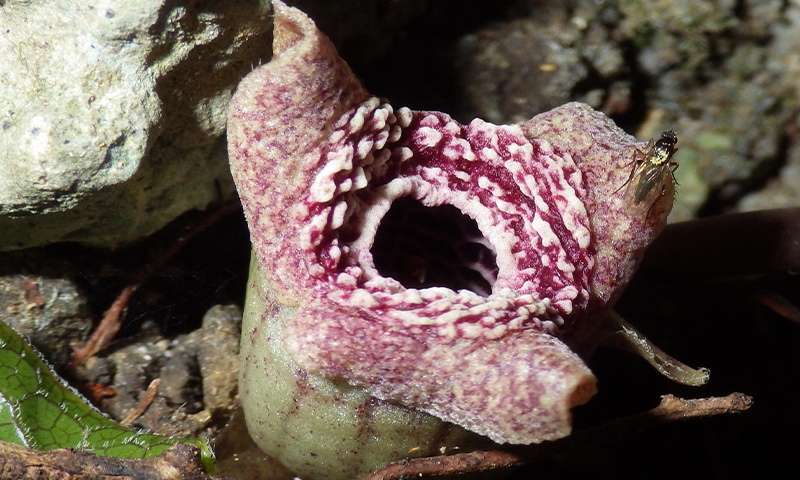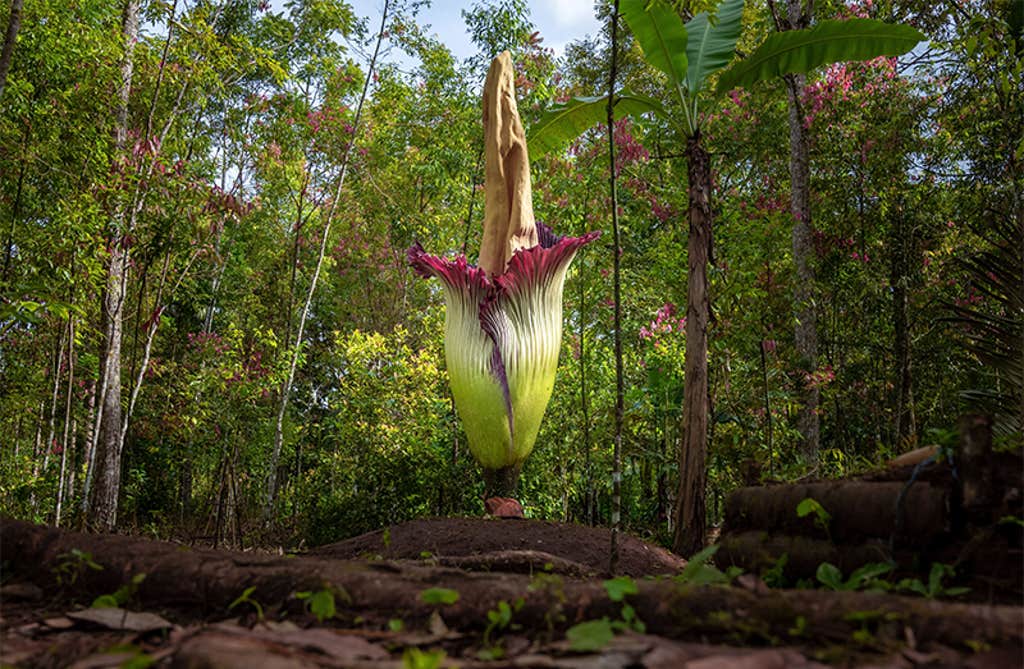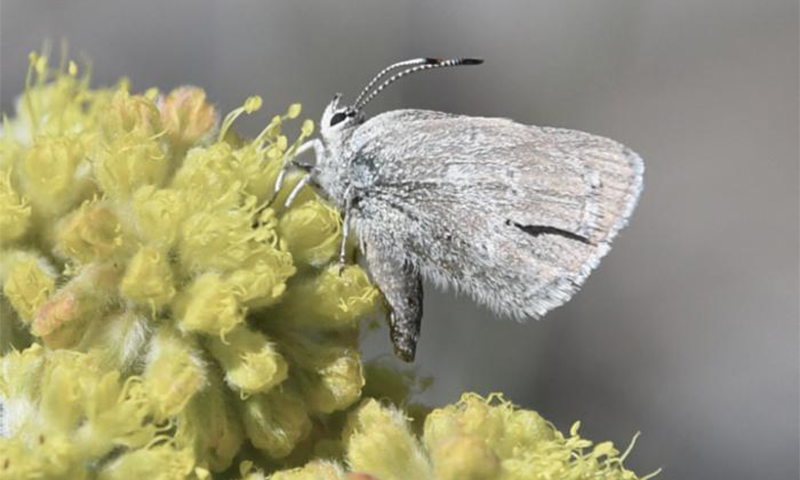Now Reading: The Genetics of Putrid-Smelling Flowers
-
01
The Genetics of Putrid-Smelling Flowers
The Genetics of Putrid-Smelling Flowers

Sign up for the free Nautilus newsletter:
science and culture for people who love beautiful writing.
The full Nautilus archive
•
eBooks & Special Editions
•
Ad-free reading
- The full Nautilus archive
- eBooks & Special Editions
- Ad-free reading

Flowers enchant us with their alluring perfumes—lavender’s calming aroma or honeysuckle’s sugary scent. But some flowers are downright malodorous, including corpse flowers, whose shocking smell (and infrequent blooms) attracts people to botanical gardens in droves. When a species called Amorphophallus gigas bloomed in Brooklyn this past winter, visitors waited hours for a cautious sniff of the deathly odor. Another plant, Rafflesia arnoldi, produces the largest individual flower in the world—and it too stinks of carcass.
These unpleasantly fragrant flowers release these fumes to attract certain pollinators, such as beetles, flies, and ants, who tend to gravitate toward what we’d consider unsavory buffets: dung and corpses. While these plant species have captivated researchers and amateurs around the globe, there isn’t a clear evolutionary explanation for how they began producing the essence of death and decay.

Researchers reported this week in Science that some reeking plants have flipped the genetic script: They create a putrid-smelling compound thanks to the same gene used by humans to reduce bad odors. The international team of scientists inspected the genetic makeup of flowers in the genus Asarum, which seem to differ widely in the scent they use to lure in various pollinators. Through tests in bacteria, the researchers linked this process in Asarum plants to SBP1, a close evolutionary relative of a gene that helps people keep their breath smelling fresh by detoxifying a smelly compound. In humans, the protein coded by the gene tames the cabbage-smelling compound methanethiol, which can contribute to bad breath when left unchecked. Asian Asarum species seem to have developed this tactic roughly 10 million years ago with tiny tweaks to the gene.
This genetic switch-up isn’t limited to Asarum species: The authors suggest that at least two other unrelated types of plants independently evolved mechanisms to broadcast a stench from methanethiol, hinting that several species encountered similar selective pressures in their environments. ![]()
Lead photo by Okuyama et al.,10.1126/science.adu8988 (2025).
-
Molly Glick
Posted on
Molly Glick is the newsletter editor of Nautilus.
Get the Nautilus newsletter
Cutting-edge science, unraveled by the very brightest living thinkers.























